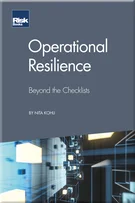Predicting Bank Defaults
Predicting Bank Defaults
Credit Models Past and Present
Credit Models: Looking to the Future
Predicting Annual Default Rates and Implications for Market Prices
An Ensemble Model for Recovery Value in Default
The Corporate Bond Credit Risk Premium
The Credit Default Swap Risk Premium
The Municipal Build America Bond Risk Premium
Predicting Bank Defaults
Beating Credit Benchmarks
Hedging the Credit Risk Premium
Managing Pension Fund Liabilities
Credit Cycle-dependent Stochastic Credit Spreads and Rating Category Transitions
Managing Systemic Liquidity Risk: Systems and Early Warning Signals
As described in Chapter 1, there has been considerable success at predicting default and credit relative value for commercial and industrial firms using Merton-type structural models, such as Moody’s/ KMV (Vasicek, 1988; Kealhofer, 1999) model and Citi’s HPD model (Sobehart and Keenan, 2002; 2003). However, generating accurate model-based estimates of PDs for financial firms has proven difficult. Some reasons for this include financials’ high levels of leverage, the relative opacity of their assets and liabilities, potential support from governments, extreme risk of “tail events” and regulatory changes. Since the financial crisis of 2008–09 and the subsequent downgrade of many financial firms, investors have been increasingly interested in better assessing and managing their credit exposure to financial institutions. Also, the US Office of the Comptroller of the Currency (OCC), in accordance with the Dodd–Frank Act, has published final rules (Department of the Treasury, 2012) that remove references to credit ratings from its regulations pertaining to investment securities, securities offerings and foreign bank capital equivalency deposits.11Section 939A of the Dodd–Frank Act
Copyright Infopro Digital Limited. All rights reserved.
As outlined in our terms and conditions, https://www.infopro-digital.com/terms-and-conditions/subscriptions/ (point 2.4), printing is limited to a single copy.
If you would like to purchase additional rights please email info@risk.net
Copyright Infopro Digital Limited. All rights reserved.
You may share this content using our article tools. As outlined in our terms and conditions, https://www.infopro-digital.com/terms-and-conditions/subscriptions/ (clause 2.4), an Authorised User may only make one copy of the materials for their own personal use. You must also comply with the restrictions in clause 2.5.
If you would like to purchase additional rights please email info@risk.net










